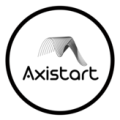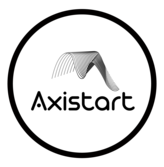In today’s digital era, Facebook and Instagram have emerged as two powerful platforms for businesses to reach their target audience and drive conversions. With billions of active users, these platforms offer immense potential for effective advertising campaigns. However, to truly harness their power, it is crucial to understand and implement the most effective advertising techniques. In this article, we will explore key strategies and tactics for successful Facebook and Instagram advertising, covering everything from audience targeting and creative content to tracking and optimization.
I. Setting the Foundation for Success:
- Defining Objectives: Before diving into advertising campaigns, it’s vital to establish clear objectives. Whether it’s generating brand awareness, driving website traffic, or increasing sales, defining your goals will guide your strategy and ensure measurable success.
- Audience Segmentation and Targeting: Both Facebook and Instagram provide robust targeting options. Leverage their extensive user data to segment your audience based on demographics, interests, behaviors, and more. Create specific buyer personas to understand your target audience’s pain points, preferences, and motivations, allowing you to craft highly tailored ads.
- Custom Audiences and Lookalike Audiences: Utilize custom audiences to target individuals who have interacted with your brand before. These could be existing customers, website visitors, or email subscribers. Additionally, create lookalike audiences to reach new users who share similar characteristics to your existing customer base, increasing the chances of conversion.
II. Crafting Engaging Ads:
- Attention-Grabbing Visuals: Compelling visuals are essential for catching users’ attention in the midst of a crowded social media feed. Use high-quality images or videos that are relevant to your brand and evoke emotions. Incorporate bright colors, strong contrast, and clear branding elements to make your ads visually appealing and recognizable.
- Persuasive Ad Copy: Craft concise and compelling ad copy that clearly communicates your value proposition. Highlight the key benefits of your product or service, use persuasive language, and create a sense of urgency. A/B test different copy variations to determine which resonates best with your target audience.
- Video Advertising: Video content has become increasingly popular on social media. Experiment with engaging video ads to captivate your audience and convey your message effectively. Keep videos short, concise, and visually engaging from the very beginning to grab users’ attention and encourage them to watch till the end.
III. Optimizing Campaign Performance:
- A/B Testing: Continuously test different variations of your ads, including visuals, copy, call-to-actions (CTAs), and targeting options. A/B testing allows you to identify the most effective elements and refine your campaigns accordingly. Test one variable at a time to draw accurate conclusions.
- Ad Placement: Facebook and Instagram offer various ad placements, including news feeds, stories, and in-stream videos. Test different placements to identify where your audience engages the most. Customize your ads to fit each placement’s format and specifications for optimal performance.
- Retargeting: Implement retargeting campaigns to re-engage users who have previously interacted with your brand but haven’t converted. Utilize dynamic product ads to show personalized content based on the user’s previous actions, reminding them of their interest and encouraging them to complete a purchase.
IV. Tracking and Measuring Success:
- Facebook Pixel and Conversion Tracking: Install the Facebook Pixel on your website to track conversions, optimize ads, and create custom audiences. Set up conversion tracking to measure the success of your campaigns and understand which ads are driving desired actions.
- Performance Analytics: Regularly monitor your campaign’s performance through Facebook Ads Manager and Instagram Insights. Analyze key metrics such as reach, engagement, click-through rates (CTR), conversion rates, and return on ad spend (ROAS). Use this
- information to identify trends, assess campaign effectiveness, and make data-driven decisions.
- Attribution Models: Understand the customer journey and attribution models to accurately attribute conversions to the appropriate touchpoints. Facebook offers various attribution models, such as last-click, first-click, and linear attribution. Choose the model that aligns best with your business goals and marketing strategy.
- Data Analysis and Optimization: Regularly analyze your advertising data to identify patterns and optimize your campaigns. Look for demographic insights, ad performance by placement, time of day, and day of the week. Use this information to refine your targeting, messaging, and bidding strategies for improved results.
V. Maximizing Ad Budget:
- Campaign Budget Optimization (CBO): Utilize Facebook’s Campaign Budget Optimization feature to automatically allocate your budget to the best-performing ad sets within a campaign. This allows for efficient spending and helps maximize the return on your advertising investment.
- Bidding Strategies: Experiment with different bidding strategies, such as cost per click (CPC), cost per thousand impressions (CPM), or cost per acquisition (CPA), based on your campaign objectives. Test different bidding options to find the most cost-effective approach for your specific goals.
- Ad Scheduling: Consider the timing of your ads to ensure maximum visibility and engagement. Use Facebook’s ad scheduling feature to display your ads during peak hours when your target audience is most active. This helps optimize your budget by reaching users when they are most likely to interact with your ads.
VI. Staying Up-to-Date with Platform Updates:
- Platform Changes and Features: Facebook and Instagram regularly introduce new features and updates to improve ad performance and user experience. Stay informed about platform changes, such as algorithm updates, ad format enhancements, and targeting options, to adapt your strategies accordingly and stay ahead of the competition.
- Industry Best Practices and Case Studies: Keep yourself informed about industry best practices and success stories. Follow advertising blogs, attend webinars, and study case studies to gain insights and inspiration for your own campaigns. Stay curious and open to learning to continuously improve your advertising techniques.
Conclusion:
Mastering effective Facebook and Instagram advertising techniques requires a combination of strategic planning, creative content creation, data analysis, and continuous optimization. By defining clear objectives, targeting the right audience, crafting engaging ads, tracking performance, and staying updated with platform changes, businesses can unlock the full potential of these social media platforms. Implement the strategies outlined in this article, adapt them to your unique business needs, and consistently monitor and optimize your campaigns to achieve remarkable results in reaching your target audience and driving conversions.
- Written by: Axistart
- Posted on: June 20, 2023
- Tags: advertising, digital marketing, facebook, instagram, social media, strategies, techniques

